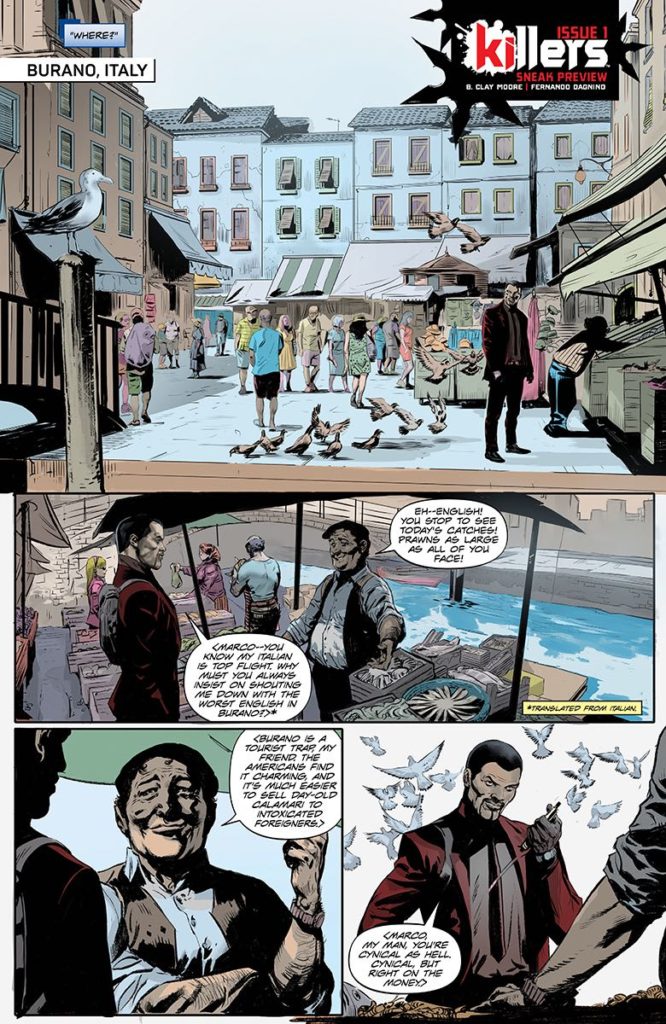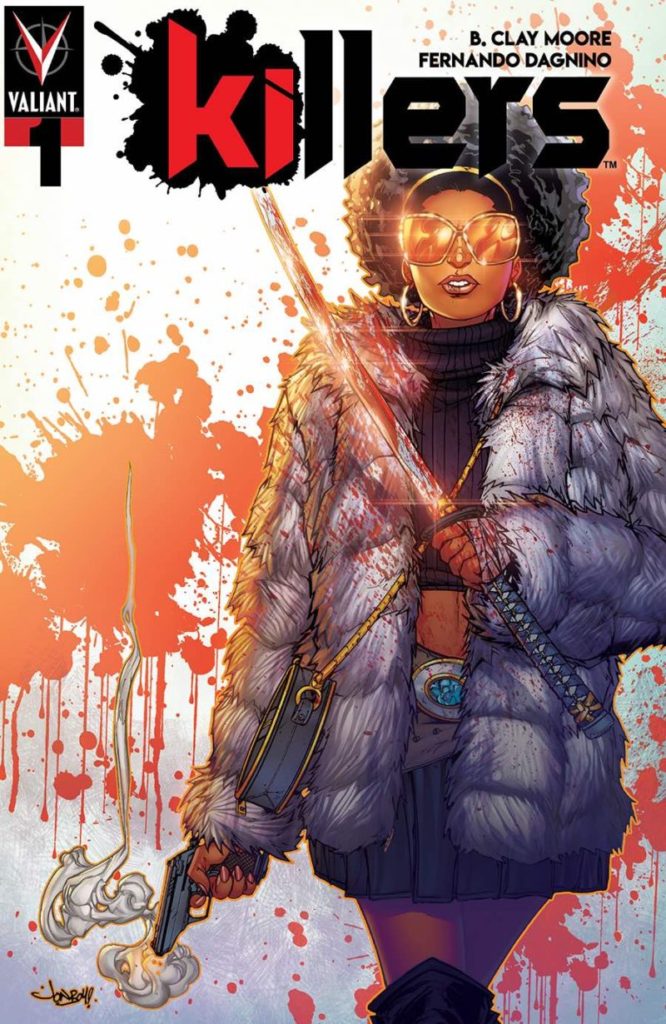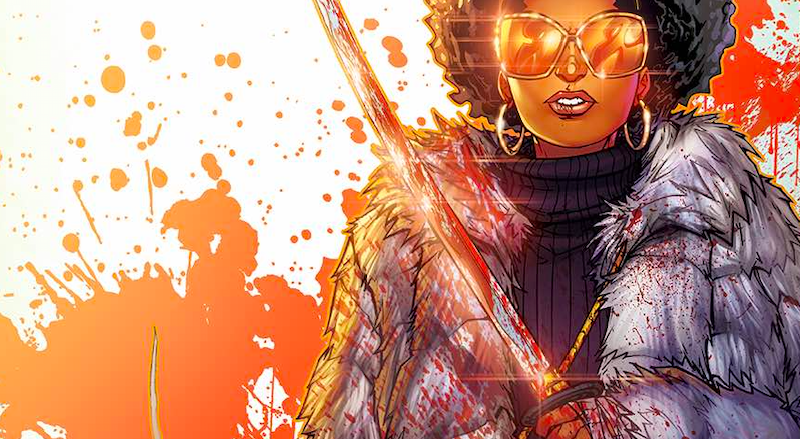INTERVIEW: Fernando Dagnino, artist on Valiant’s ‘Killers,’ remembers comic scene in Madrid
Image courtesy of Valiant / Provided with permission.
Valiant’s new miniseries, Killers, is a five-issue tale of assassins by writer B. Clay Moore and artist Fernando Dagnino. Issue #1 was recently released.
In the comic, five assassins have the ability to channel their inner “ki,” a spiritual energy that makes them into superninjas. They learned about these tremendous gifts (curses?) from their former sensei, Jonin, who is now looking for them for mysterious reasons.
Dagnino is best known for Supergirl, Superman and Wonder Woman, among many other titles. He counts among his influences Richard Corben, Moebius and Milo Manara. Recently Hollywood Soapbox exchanged emails with Dagnino about Killers. Questions and answers have been slightly edited for style.

What’s it like working with writer B. Clay Moore?
I’m really enjoying the way Clay constructs the scripts. He’s very accurate with the pacing and the revelation of new information. And in this sense, the portrayal of the characters comes in small but pertinent doses in a natural way as if you were making new friends. With very little, he conveys a lot, and he understands very well the nature of comic books as his pages provide enough space and freedom for the artist to get involved in the narration and feel of the storytelling.
How long did it take you to settle on the look and feel of Killers?
Not very long. I felt comfortable working on the series from the beginning. The style of the characters was clearly defined with the early designs by AJ Jothikumar, and the advice given by the editors was very helpful. I also acquainted myself with Valiant’s darker and more realistic approach to stories.
For some of the global locations in issue #1 (Burano, Italy, and London), did you have to conduct any research on the places?
I was lucky that I had visited Burano, an island near Venice that is north of Italy, two years ago. That helped me to better understand the setting and imagine with more accuracy how the action scene could work. Of course, some other places like London I knew, but If you want to draw a particular street or area, it’s always advisable to check out some images as there are always tiny details that are characteristic of that area that help define it.
When did you realize you had a talent for comic book art? Does it go back to when you were a child?
Yes, it goes way back to my childhood, and although I was 4 years old, I remember the exact moment. The teacher had asked the class to draw a skeleton. I loved to draw spooky stuff like any child that age. Suddenly, the rest of the kids and the teacher came along and praised my drawing. I didn’t understand; I had just drawn a skeleton. The surprise came when I looked at the rest of the kids’ drawings, and most of them were circles with stripes. I remember telling them, ‘But that’s not a skeleton.’ And they answered back something like, ‘Well, I can’t do any better.’ So, I suddenly realized that not only I could draw, but that the rest of the class couldn’t! So, the class defined me as someone who was able to draw.

Was there a strong comic scene in Madrid, Spain, when you were growing up?
Well, I grew up in a Spain that had just come out of a long, 40-year fascist dictatorship, and in the late ’70s and the ’80s there was a cultural explosion. The country opened up to new cultural phenomena from the UK, France and USA. As a result, a rebellious and untamed local cultural movement expressed itself throughout many fields: music, cinema, literature and, of course, comics.
The comic scene in Spain was not a quarter of the size it is today, but the first comic book stores were planting the first seeds and importing material from abroad. And local publishers were blowing our minds with counterculture comics.
But nevertheless, back in those days, you could very well think you were the only kid on earth who read comics. That’s what I really love nowadays when I meet more and more fellow Spanish artists and comic fans from an approximately similar generation. I realize we were not alone back then, and that although we didn’t know it, some blocks away from where we grew up there was another kid reading alone in his room and sharing the same fascination for the Hulk, Spider-Man or Batman, or reading in secret stories by Corben, Moebius or Manara.
And although back then comics were mainly directed toward male readers, there were many girl readers, too, some of whom later became comic book artists. So, I can’t help but see it as a children’s reunion whenever we gather together at a con or some sort of event.
By John Soltes / Publisher / John@HollywoodSoapbox.com
Killers #1, written by B. Clay Moore and featuring art by Fernando Dagnino, is now available from Valiant. Click here for more information.

